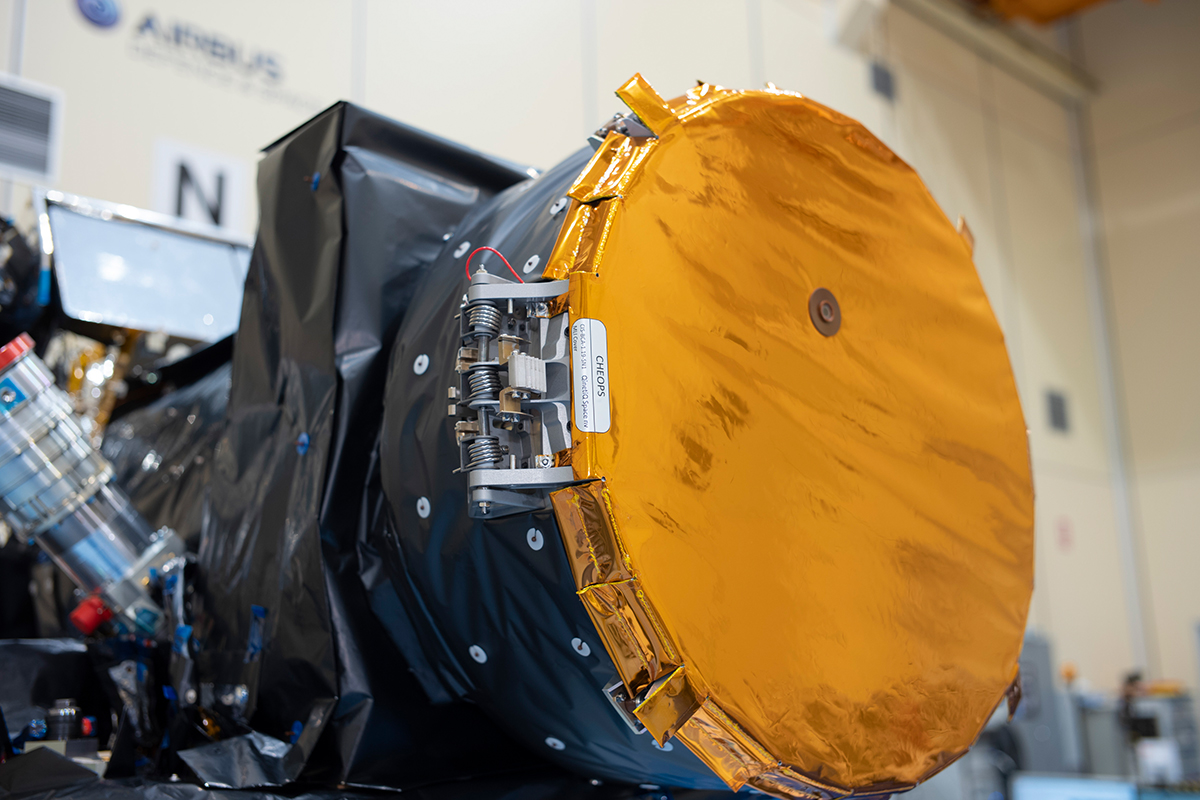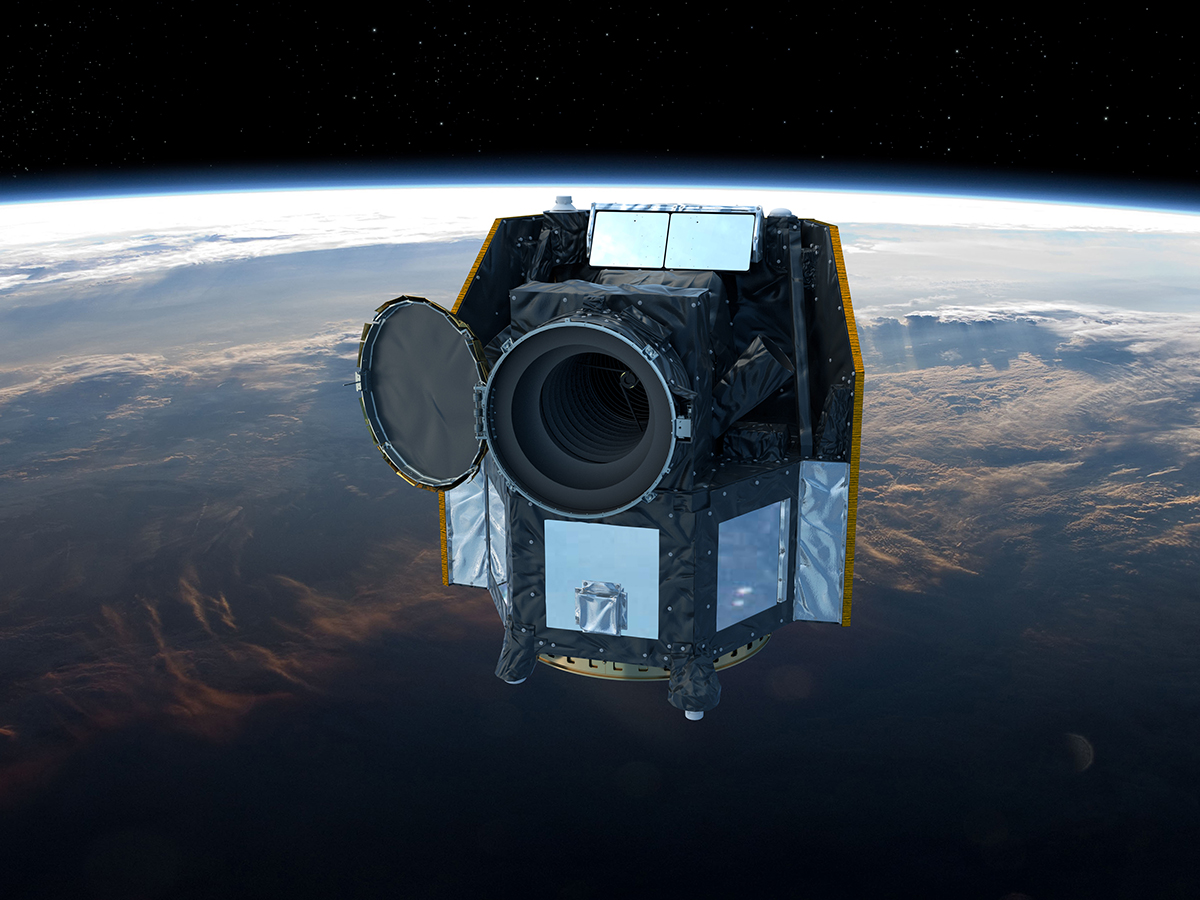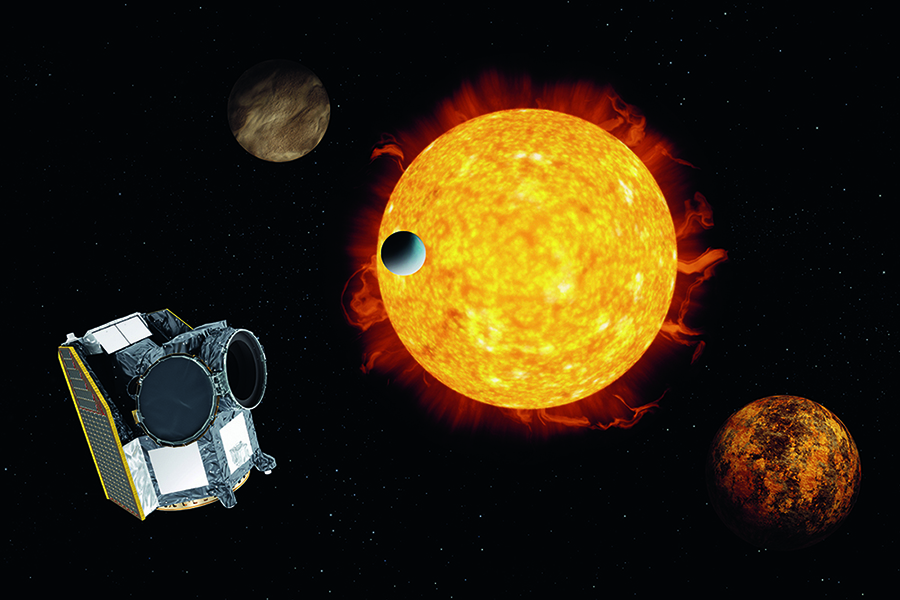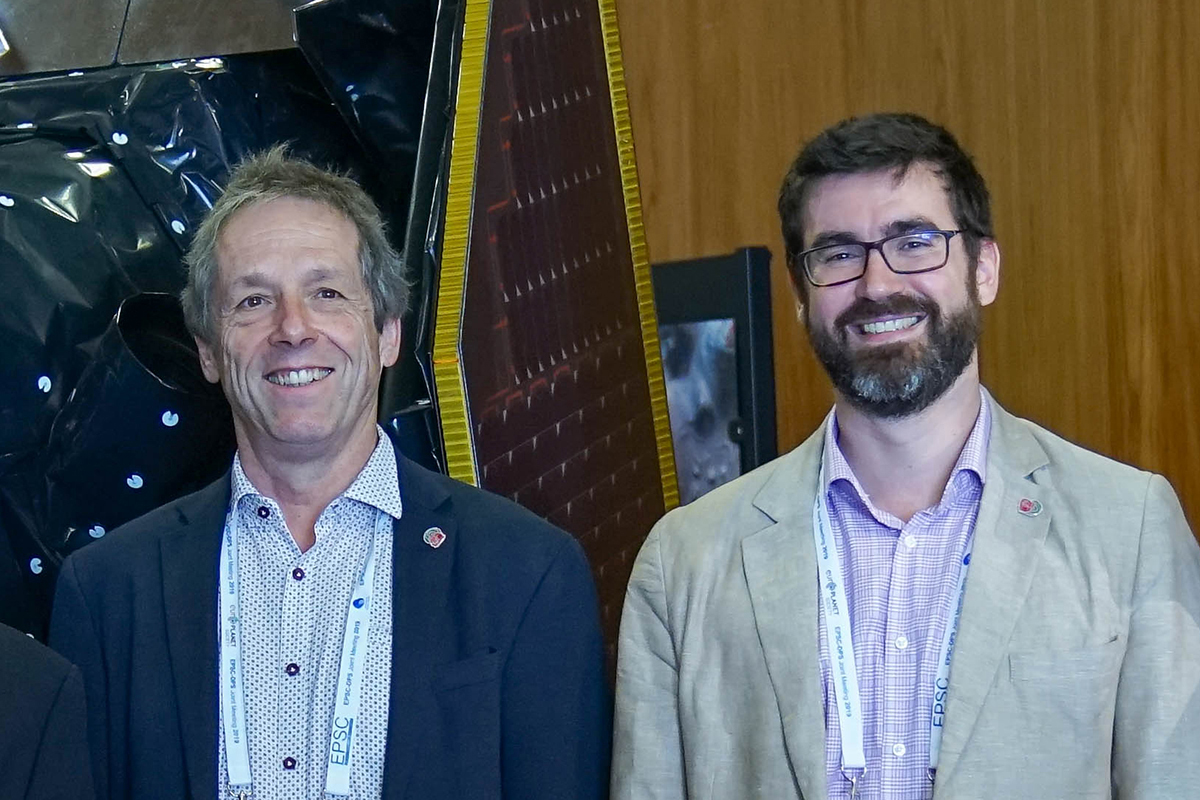Cover of CHEOPS Space Telescope Open
Decisive moment for the CHEOPS space telescope: The cover was opened as intended on Wednesday, January 29, 2020 at 7:38 am. CHEOPS is now being tested for precision and the first images are being produced. CHEOPS is a joint mission of ESA and Switzerland, led by the University of Bern, in collaboration with the University of Geneva.
"Shortly after the launch on December 18, 2019, we tested the communication with the satellite. Then, on January 8, 2020, we started the commissioning, that is, we booted the computer, carried out tests, and started up all the components," explains Willy Benz, professor of astrophysics at the University of Bern and Principal Investigator of the CHEOPS mission. All the tests went outstandingly well, he says. "However, we were now looking forward excitedly and with a bit of nervousness to the next decisive step: the opening of the CHEOPS cover," continues Benz.
At 7:38 am on Wednesday, January 29, 2020, the moment had arrived. The Mission Operation Center (MOC) at the Instituto Nacional de Técnica Aeroespacial (INTA), near Madrid, Spain, gave the command to open the CHEOPS cover. "The cover was opened by sending electricity to heat an element which held the cover closed. The heat deformed this element and the cover sprung open. A retaining fixture caught the cover," explains Benz. "Thanks to the measurements of the sensors installed, we knew within minutes that everything had worked as planned," Benz continues.
First images to be published in one to two weeks
The successful opening of the cover marks the beginning of a series of new activities. "In the next two months, many stars with and without planets will be targeted in order to examine the measurement accuracy of CHEOPS under different conditions," Benz explains. In addition, these activities allow training all aspects of the ground segment – the Science Operations Center at the observatory of the University of Geneva – with a view to the beginning of the regular science operation phase.
"The raw data of CHEOPS are being processed in the so-called data reduction pipeline," says David Ehrenreich, CHEOPS project scientist at the University of Geneva. CHEOPS has already produced hundreds of images; although these were completely black because the cover was still closed, they have helped the team to calibrate the instrument. Ehrenreich explains: "The complete assessment of the abilities of CHEOPS and the ground segment will take some time. However, we expect to be able to analyze and publish the first images within one or two weeks."
CHEOPS – in search of potential habitable planetsThe CHEOPS mission is the first of the ESA’s newly created "S-class missions" (small class missions with an Agency budget under 50 million) and is dedicated to characterizing exoplanets’ transits. "CHEOPS" (CHaracterising ExOPlanet Satellite) will make highly accurate measurements of stars and monitor small changes in their brightness that are caused by a planet transiting in front of the star. CHEOPS was developed as part of a partnership between the European Space Agency (ESA) and Switzerland. Under the leadership of the University of Bern and ESA, a consortium of more than a hundred scientists and engineers from eleven European states was involved in constructing the satellite over five years. CHEOPS began its journey into space on Wednesday, December 18, 2019 on board a Soyuz Fregat rocket from the European spaceport in Kourou, French Guiana. Since then, it has been orbiting the Earth on a polar orbit in roughly an hour and a half at an altitude of 700 kilometers following the terminator. The Swiss Confederation participates in the CHEOPS telescope within the PRODEX programme (PROgramme de Développement d'EXpériences scientifiques) of the European Space Agency ESA. Through this programme, national contributions for science missions can be developed and built by project teams from research and industry. This transfer of knowledge and technology between science and industry ultimately also gives Switzerland a structural competitive advantage as a business location – and enables technologies, processes and products to flow into other markets and thus generate added value for our economy. More information: https://cheops.unibe.ch/ |
Bernese space exploration: With the world’s elite since the first moon landingWhen the second man, "Buzz" Aldrin, stepped out of the lunar module on July 21, 1969, the first task he did was to set up the Bernese Solar Wind Composition experiment (SWC) also known as the “solar sail” by planting it in the ground of the moon, even before the American flag. This experiment, which was planned and the results analysed by Prof. Dr. Johannes Geiss and his team from the Physics Institute of the University of Bern, was the first great highlight in the history of Bernese space exploration Ever since Bernese space exploration has been among the world’s elite. The numbers are impressive: 25 times were instruments flown into the upper atmosphere and ionosphere using rockets (1967-1993), 9 times into the stratosphere with balloon flights (1991-2008), over 30 instruments were flown on space probes, and with CHEOPS the University of Bern shares responsibility with ESA for a whole mission. The successful work of the Department of Space Research and Planetary Sciences (WP) from the Physics Institute of the University of Bern was consolidated by the foundation of a university competence center, the Center for Space and Habitability (CSH). The Swiss National Fund also awarded the University of Bern the National Center of Competence in Research (NCCR) PlanetS, which it manages together with the University of Geneva. |
Exoplanet research in Geneva: 24 years of expertise awarded a Nobel PrizeCHEOPS will provide crucial information on the size, shape, formation and evolution of known exoplanets. The installation of the "Science Operation Center" of the CHEOPS mission in Geneva, under the supervision of two professors from the UniGE Astronomy Department, is a logical continuation of the history of research in the field of exoplanets, since it is here that the first was discovered in 1995 by Michel Mayor and Didier Queloz, winners of the 2019 Nobel Prize in Physics. This discovery has enabled the Astronomy Department of the University of Geneva to be at the forefront of research in the field, with the construction and installation of HARPS on the ESO's 3.6m telescope at La Silla in 2003, a spectrograph that remained the most efficient in the world for two decades to determine the mass of exoplanets. However, this year HARPS was surpassed by ESPRESSO, another spectrograph built in Geneva and installed on the VLT in Paranal. CHEOPS is therefore the result of two national expertises, on the one hand the space know-how of the University of Bern with the collaboration of its Geneva counterpart and on the other hand the ground experience of the University of Geneva supported by its colleague in the Swiss capital. Two scientific and technical competences that have also made it possible to create the National Center of Competence in Research (NCCR) PlanetS. |
2020/01/29




